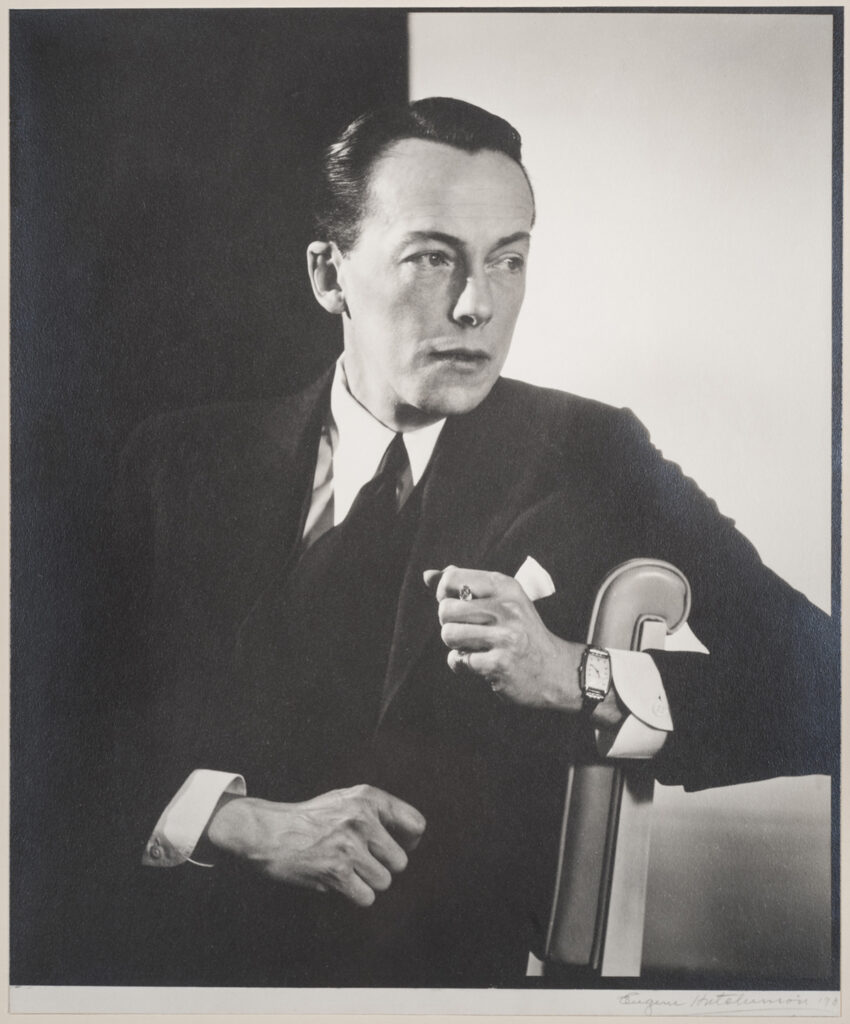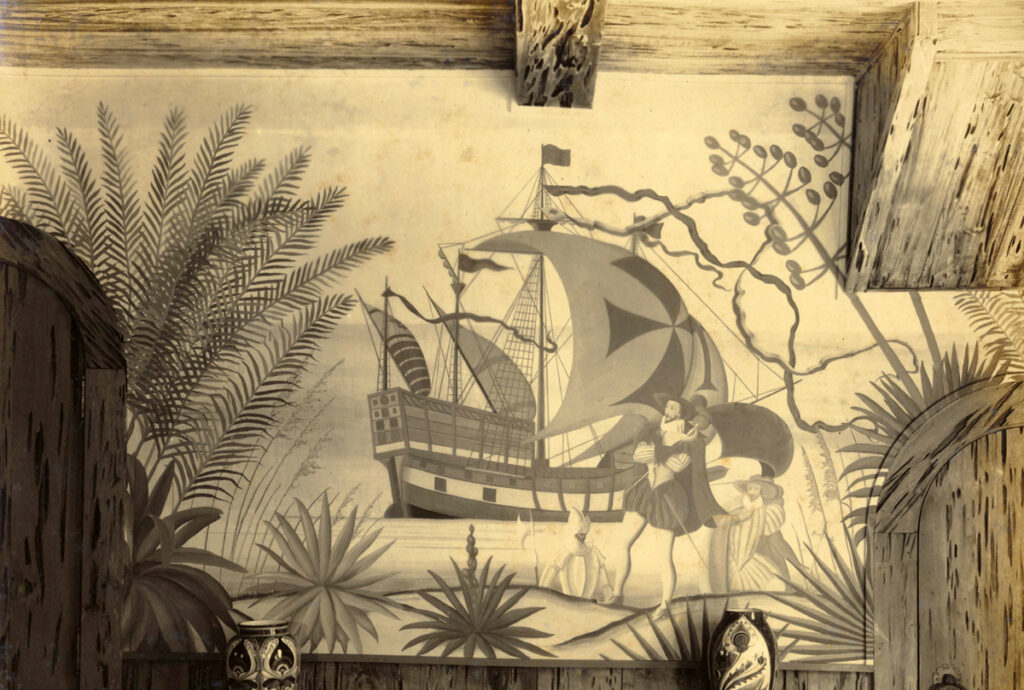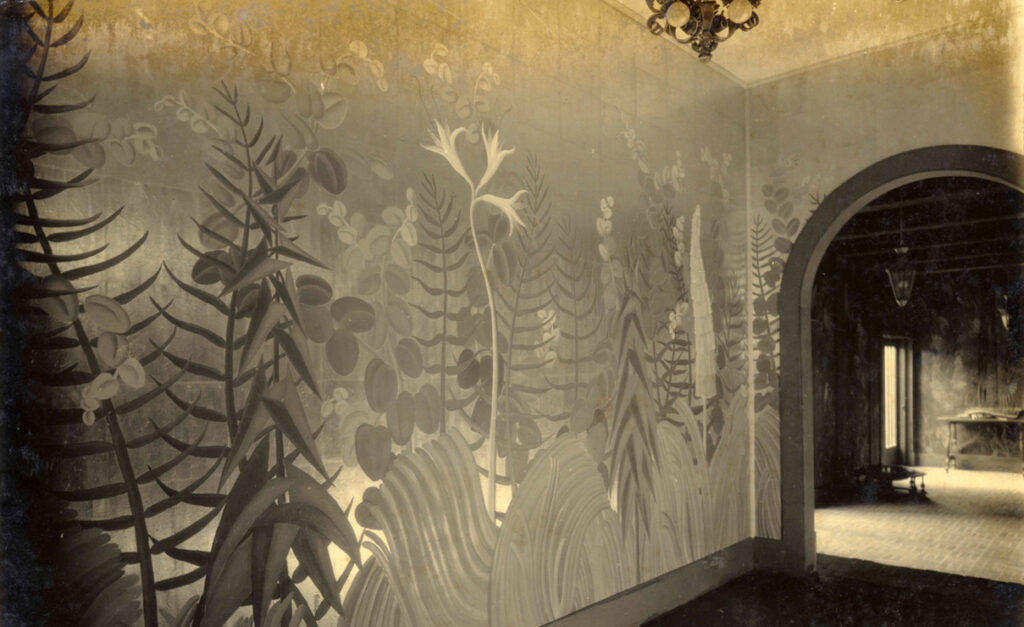By Emily Coughlan from the Spring 2024 Edition of Reflections Magazine
In the early 1920s, both tourism and land sales were booming in Central Florida. Wealthy northerners were cultivating properties in Florida to escape the harsh winters. One such property, built in 1923, was first known as the “Handley House” and later the Frank Bristley House or El Real Retiro. It was a grand addition to the east Volusia County city of New Smyrna (a name that would change to New Smyrna Beach in 1947). Throughout its 100-year history, this lush estate, which is a private residence, has undergone several modifications, but it maintains the original charm and spirit of relaxation intended by its builder, Robert Handley.
The Handley House
Born in 1893, Robert Handley was a financier and stockbroker hailing from Long Island, New York. Through hard work and determination, he amassed a fortune in the New York City financial markets. He began his career at a young age as a messenger and office aide at the stock brokerage firm of Smith, Graham & Rockwell. After a few short years he became a partner in 1917 and later went on to start his own firm, Handley & Associates.
Handley first became interested in Florida during the post-World War I land boom. He visited New Smyrna for business in 1920, fell in love with the area and began planning a tropical escape there. Despite not being the largest or most elaborate property in New Smyrna, the Mediterranean Revival estate he created was the most ambitious project undertaken in the city in the 1920s. It took several years to complete, as it was continuously enhanced.
Construction began with the south wing. This portion of the home was originally a one-story, three-bedroom, two-bathroom structure that housed a music room and ballroom with vaulted ceilings, a fireplace, and an east-facing patio. The north section of the home – a one- and two-story wing with only one bedroom and one bath – also included a library and the chauffeur’s quarters above the garage. While the home’s intricate design was distinctive, what makes it especially notable are the murals painted throughout by artist Robert E. Locher.

Robert E. Locher (photo by Eugene Hutchinson, ca. 1930, courtesy private collection).
Robert E. Locher: Fashionable design
Locher was born and raised in Lancaster, Pennsylvania. He trained as an architectural draftsperson but yearned to be an artist. Shortly after completing his schooling, he opened a studio in New York City. Throughout his career, he made a name for himself as a fashion illustrator for magazines such as Rogue, Vogue, House and Garden, and Vanity Fair. Additionally, he excelled at costume and set design for Broadway and off-Broadway productions.
However, Locher received the greatest acclaim for his interior designs and decorative arts, particularly the lavish murals that he painted in the homes of New York society. In 1924, he was commissioned to create murals for Robert Handley’s New Smyrna home. Additional murals in the home were created by another American artist, Lauren Ford.
For his project for Handley, Locher created scenes depicting the history of Florida, from the arrival of the Spanish to the land boom days of the 1920s. Having been a fashion illustrator for several years, Locher had a particular way of drawing figures, and his depictions of people lack the traditional detail often seen in figure painting. This is especially noticeable in the murals adorning the home’s library.

Library at El Real Retiro, courtesy Demuth Museum, Lancaster, Pennsylvania.
In one mural, illustrating the landing of Juan Ponce de León in 1513, Locher painted him against a bright blue backdrop, standing before a Spanish galleon and surrounded by figures. This scene, as well as depictions of other ships and onlooking Indigenous Peoples envelops the fireplace. Portrayals fast forward to the modern day, displaying the first southbound steamer as bathers and other figures enjoy the Florida coastline. These contrasting vignettes meld beneath a planked cypress ceiling rendered in light aquamarine to immerse the voyeur into the murals.
Another highlight of the home’s decoration has become known as the Silver Hall. Inspired by Florida’s flora and fauna, Locher produced an awe-inspiring passageway, papered in shimmering silver. Originally the entrance to the home was just past this corridor. Its intricate design encompasses various complimentary colors. Moss-green flooring and woodwork painted deep green accompanied the lush walls. When Locher’s commission was completed, the Silver Hall and other artwork in the house was featured in a 1925 issue of House and Garden magazine.
Becoming El Real Retiro
Unfortunately, Handley suffered great losses in the stock market and was forced to sell his New Smyrna home in 1928. He eventually moved to California, where he lived until his death in 1971.
Handley’s creation was purchased by an Ohio businessman, Frank D. Bristley, who named it “El Real Retiro,” which is Spanish for “The Royal Retreat.” Like Handley, Bristley began life as a child of humble means. Hailing from Hamilton, Ohio, he began his career as a grocery store stock boy and over time rose to the position of store manager. Later, Bristley became sales manager and vice president of the Royal Baking Powder Company and was integral in the development of the chain-store and supermarket concepts of the grocery business. He retired in 1927 and quickly became involved in local politics upon his relocation from New York City to New Smyrna. After his death in October 1941, his widow sold their New Smyrna home and returned to New York City.

Library at El Real Retiro, courtesy Demuth Museum, Lancaster, Pennsylvania.
Transformation and continuity
Several renovations have occurred throughout the home since Bristley’s death, but one is especially significant. From its conception, the two wings of the mansion always had two personalities, so perhaps it’s natural that since 1951 the house has served as two separate, private residences. The south wing of the home became 637 N. Riverside Drive, while the two-story northern wing of the home became 747 Faulkner Street.
The murals Robert Locher created still adorn the walls of the Faulkner Street residence. What was once Handley’s library was converted to a living room. Locher’s Silver Hall remains intact, but the door at its end is now sealed on the Faulkner side and hidden by a stucco wall on the Riverside side. Additionally, the Faulkner Street home was enhanced to include a bar and efficiency kitchen.
Over the years, 637 N. Riverside Drive has also undergone significant renovations. The home has been fully modernized and updated, and a pool has been added. In 1987, El Real Retiro was listed on the National Register of Historic Places.
In the 1920s, Robert Handley sought to build a tropical, Mediterranean escape at New Smyrna, Florida. The homeowners, particularly the stewards of the murals, have endeavored to preserve the dwelling’s history. Regardless of changes in ownership throughout the years, the façade of the property has remained nearly unchanged. Due to these efforts, if Handley were to approach the property today, he would likely recognize it as home.

